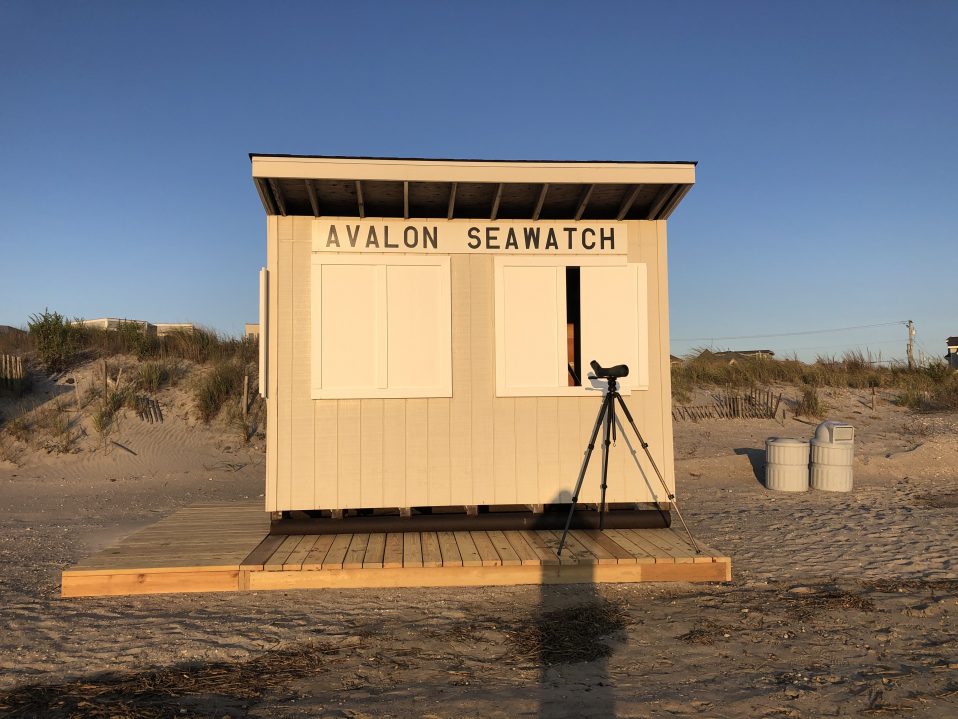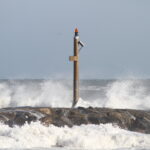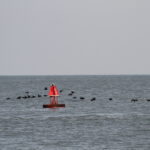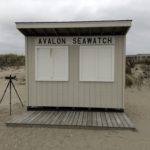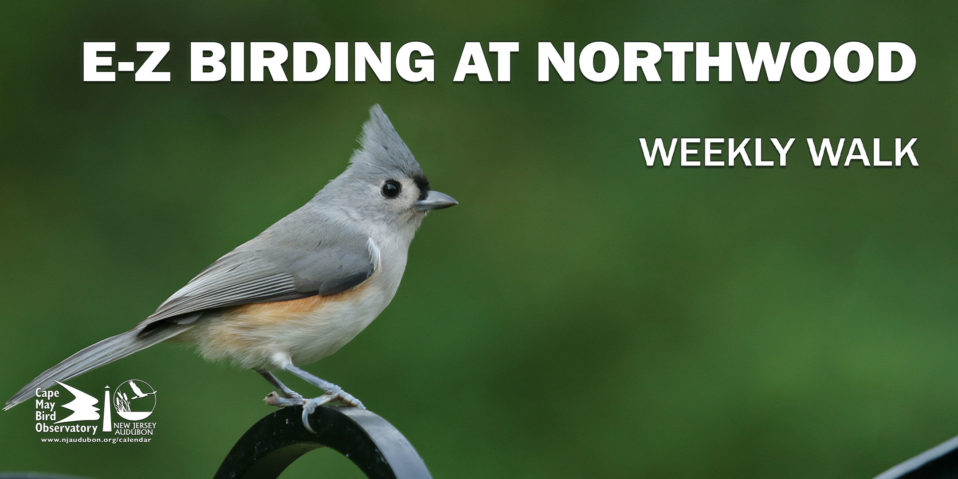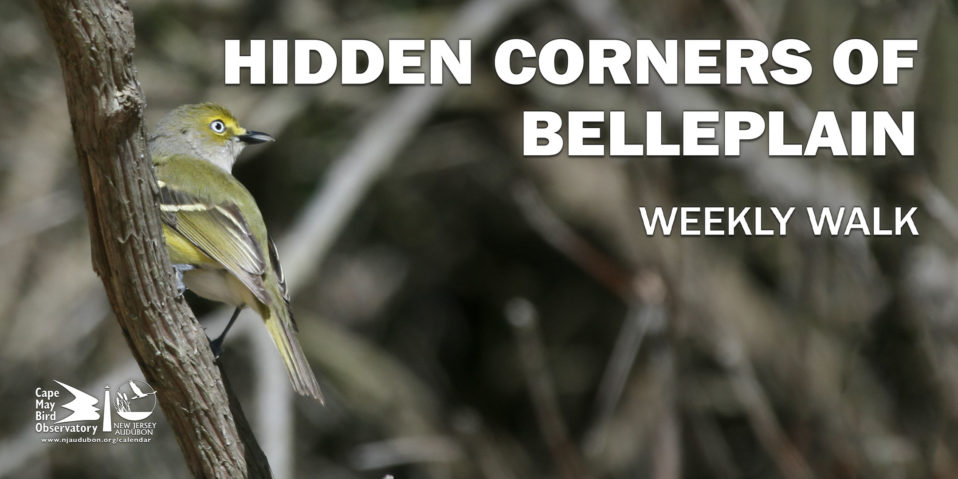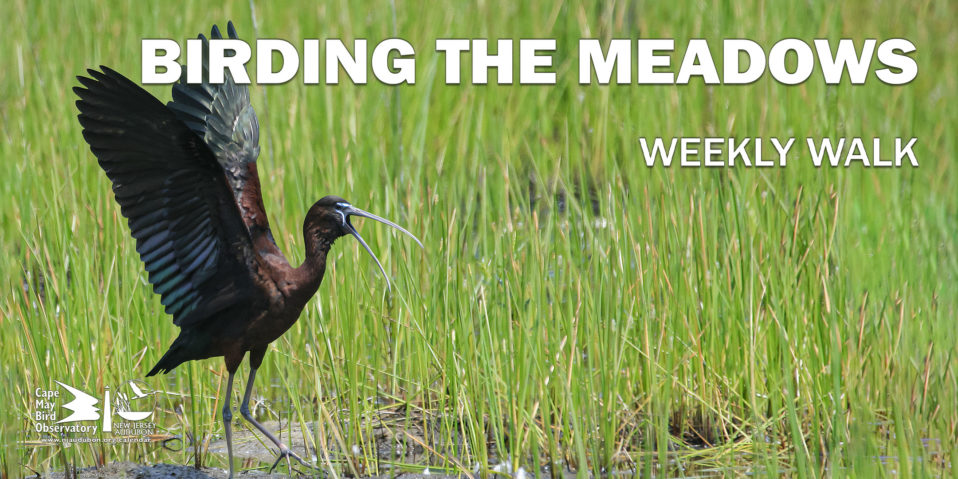Hi everyone!
This is David Weber, and I’m back for my 4th year counting the Avalon Seawatch! Time sure does fly by! I’ll be posting weekly updates from here on out, and in this post I’ll update you on the first two weeks of the count so far in 2020 (September 22nd through October 6th). I’m excited to experience another season watching the spectacular waterbird flight throughout the coming months from the best location there is for observing it. I hope many of you can either come visit (masked and socially distanced, of course), keep up with the season’s progress via this blog, or keep yourself updated up-to-the-minute at Trektellen.org.
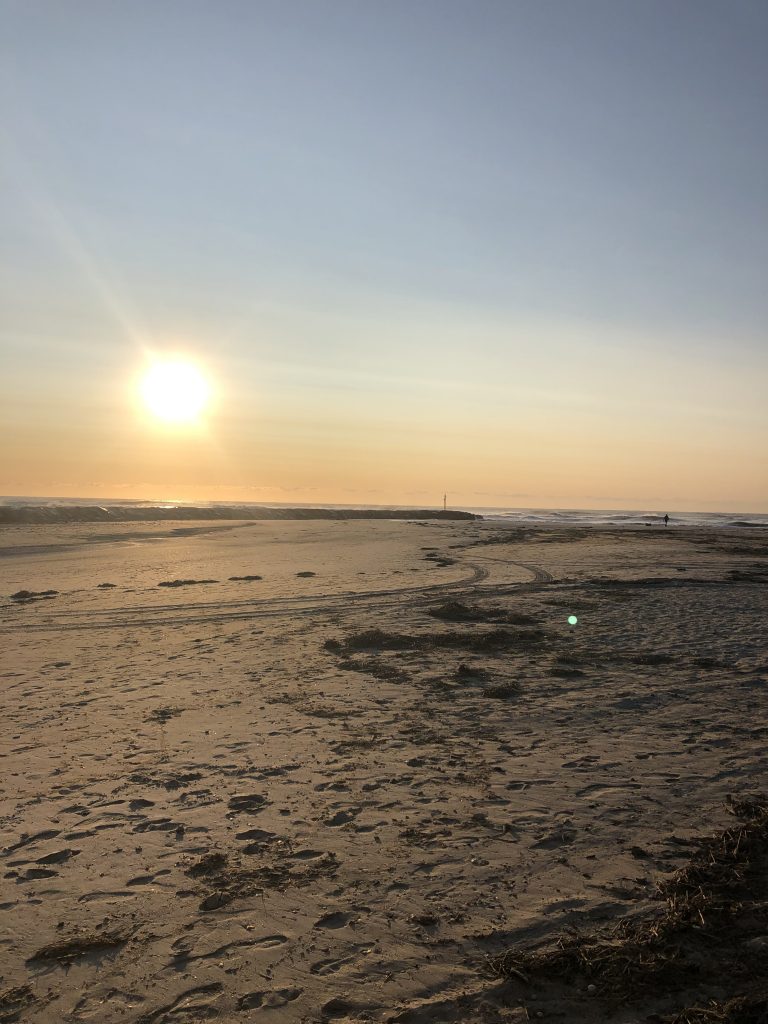
The first day of the count was a bit slow despite starting off at a chilly 46 degrees, with only a small movement of 500 Double-crested Cormorants and hardly any scoters, as well as a smattering of Laughing Gulls and Brown Pelicans and a nice Blue-winged Teal. Lots of butterflies, including Monarchs, Cloudless Sulphurs, Mourning Cloaks, and Buckeyes, were abundant and heading southward in the warm(-er) afternoon.
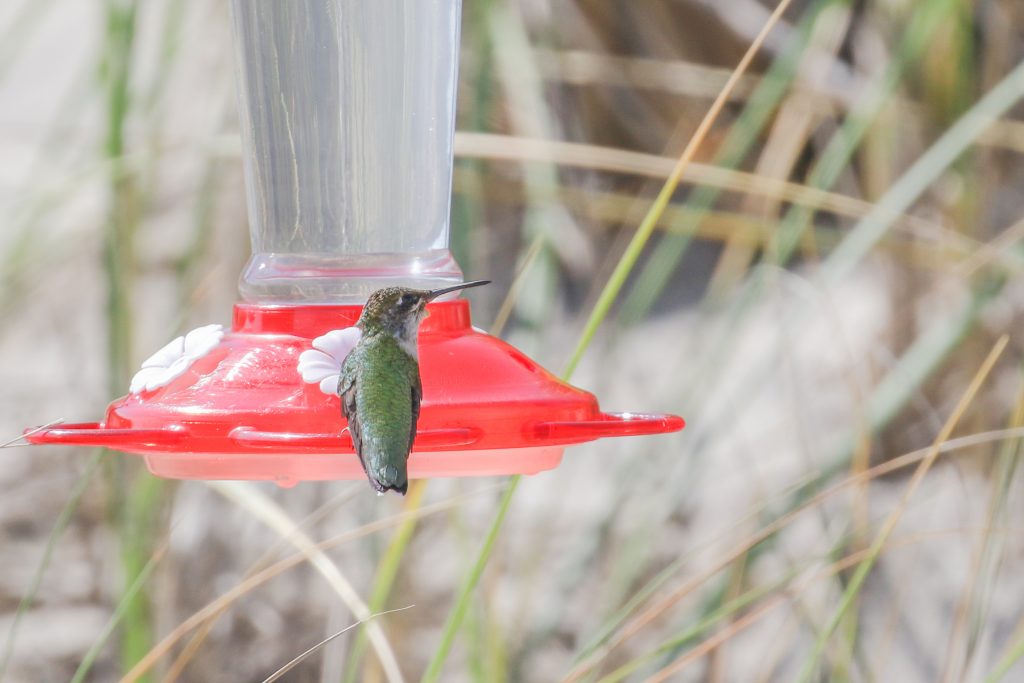
A Ruby-throated Hummingbird re-fueling at our Seawatch hummingbird feeder. (Photo by Tom Reed.)
The next few days were even slower, although they included some interesting non-waterbirds, such as a Red-headed Woodpecker and a Yellow-breasted Chat coming in off the ocean. Friday the 25th even had an American Golden-Plover heading south. Our first Red-throated Loons appeared on Saturday the 26th, still in breeding plumage.
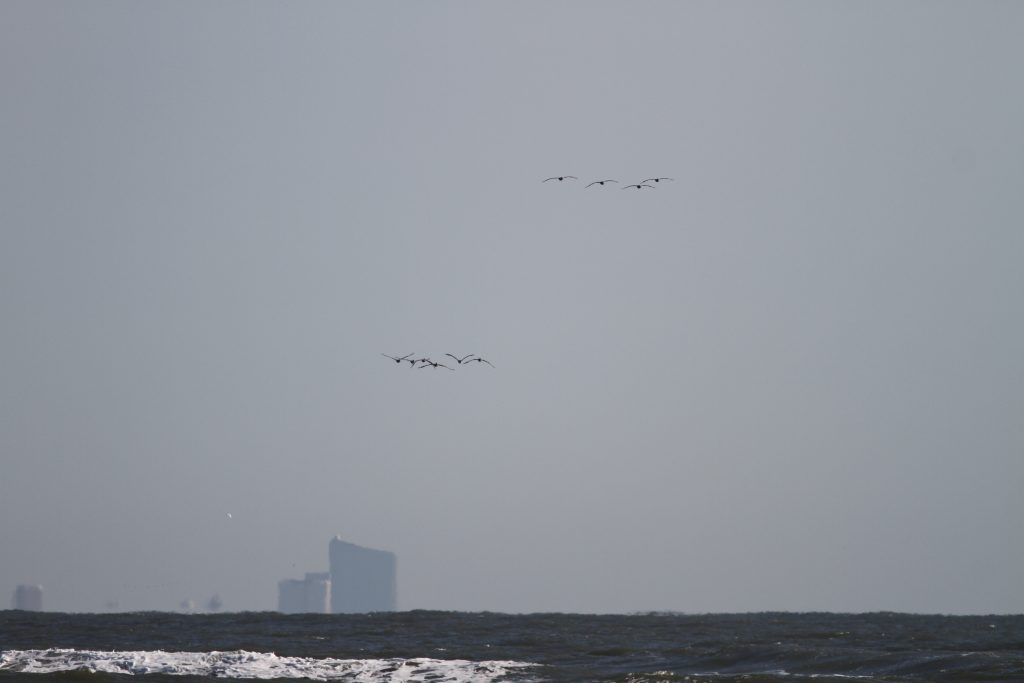
A flock of Brown Pelicans heading south against the backdrop of Atlantic City.
While terns and gulls continued to move in respectable numbers, the first big movement day did not occur until October 3rd, with over 2,200 Double-crested Cormorants and 335 Black Scoters, as well as the first Brant and Common Eider of the season, a late Glossy Ibis, a smattering of dabbling ducks like Wood Duck, American Black Duck, Northern Pintail, and Green-winged Teal, a Marsh Wren, and 12 species of warblers flying in off the water.
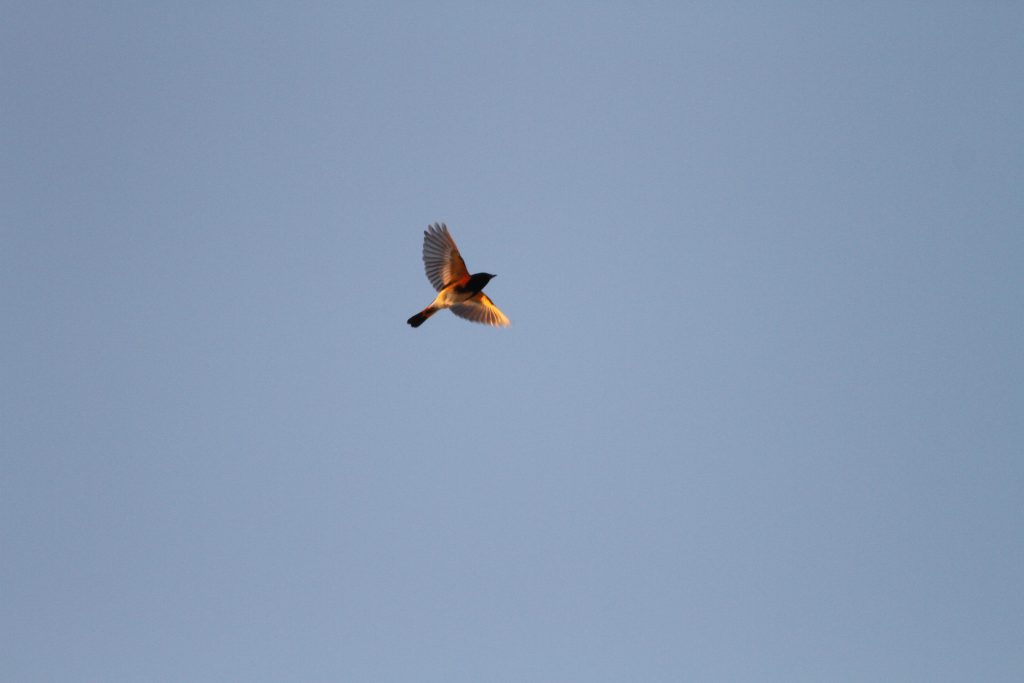
Male American Redstart returning to land in the morning.
This continued into the 4th, with another 2,300 Double-crested Cormorants, nearly 2,000 Black Scoter, and over 200 Green-winged Teal and 100 Northern Pintail. A Yellow-breasted Chat was seen briefly in the dunes and the first Bonaparte’s Gull of the season. October 5th brought an adult Brown Booby, over 2,000 Black Scoter, and over 3,200 Double-crested Cormorants, as well as over 2,700 Laughing Gulls. A young Great Cormorant was also the first of the season, and there was an impressive flight of over 300 Monarch butterflies. October 6th was much the same, this time with a first-year Brown Booby and over 1,000 Black Scoter and 2,400 Double-crested Cormorants.
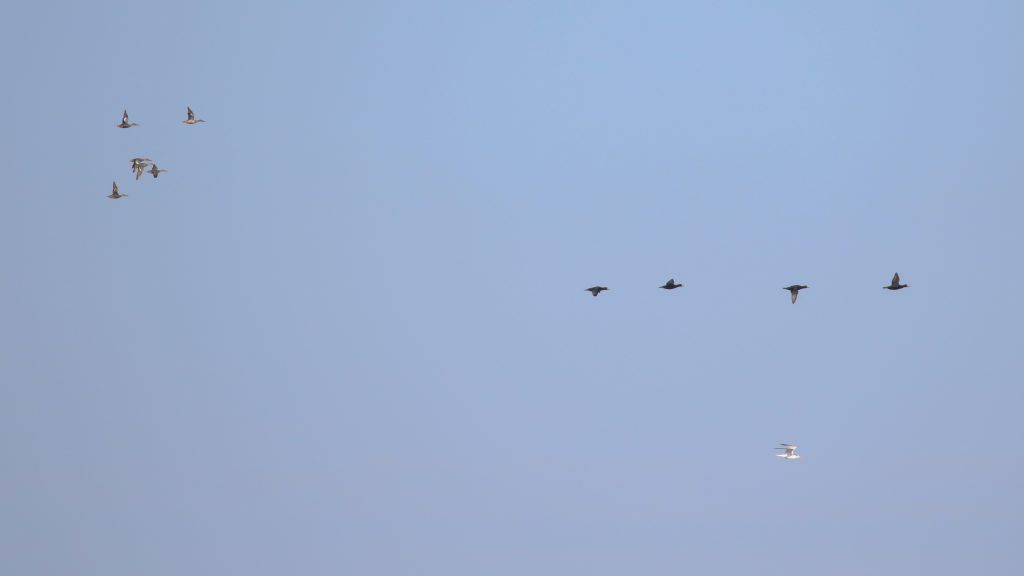
A nice mix of waterbirds, with Northern Shovelers (upper left), Black Scoters (right), and a Royal Tern (lower right). (Photo by Tom Reed.)
While the season has started off slow, things are finally picking up here in October, and will only continue to increase into a full sprint by the end of the month. Stay tuned!
By David Weber




